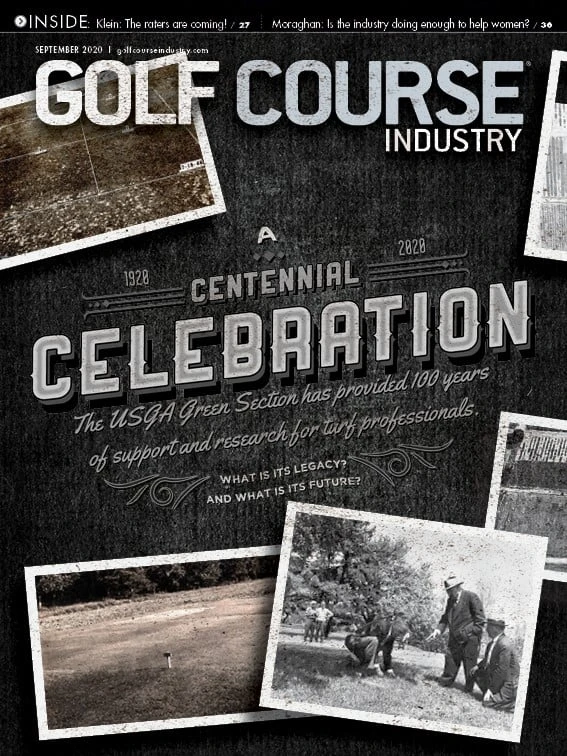“For what it’s worth, it was worth all the while.”
— Green Day

One of my high school/college-aged employees: “Hey, Brent. Can I talk to you for a minute?”
Me: “What’s up?”
I then play dumb, knowing exactly what is about to happen.
Employee: “Well, see, this just isn’t going the way I thought, and I think I am going to ...”
There are 15 different derivatives to this conversation, but they all end the same way — the employee quits.
I have heard it all. Sob stories, anger and explanations and, truthfully, I have probably zoned out during most of them. I’m trying to determine who I can lean on now that we are an employee down. That’s all I’m concerned about at that point.

There have been countless stories written about the work ethic of millennials and Gen Z-ers in turf and other industries. We all know the stereotype: lazy, technology-dependent, sheltered, spoiled, entitled young adults. Unfortunately, my last few years I totally agreed with all of it. It got to the point where I almost refused to hire high school and college students in 2020, because I was so tired of watching them quit or stop showing up after it got tough.
The problem is, especially in a smaller market like Columbus, Indiana, there’s only so much labor you can put on a baby boomer before it gets too difficult for them physically. I was between a rock and a hard place, so I rehired a serviceable young man from our 2019 crew. A few weeks later, I added two young ladies who had recently graduated from local high schools. They were introduced to me by a board member I think highly of. Little did I know the “Youngbloods” would become the foundation of our crew for the COVID-19 Summer of 2020.
I had early intentions of hoping they could pick up some tasks such as weed eating and weed pulling and, perhaps, some occasional walk mowing. It turned out they became so much more than that. By the end of the summer, they were among our most skilled greens water applicators, triplex mowers and walk-mowing specialists. They brought a new attitude to the crew with their upbeat personalities and energy. Working with them was a breath of fresh air. I hope you can help us for a little bit became I could not have gotten through this summer without you. I’m extremely grateful and pleasantly surprised with how it developed.
OK, I know what you’re thinking: Cool story, bro, but you got lucky and found three good teenagers for one summer. What does that have to do with the rest of us?
Hold up. I’m getting there.As outstanding as they were on the course, it’s what they taught me off the course that might be the most important thing. I soon realized this was going to work out and they were going to be the type of young adults I’m hoping to bring in. I scheduled a meeting and asked them, “Where do I find more employees like you in the years to come? I lucked into you three. How do I make my own luck going forward?”
Their answers were very forthcoming.
1 Recruit! Don’t wait for them to come to you. Send flyers to the high schools. Let people know you are out there, especially locally. This may seem inherently obvious. But I’m not from the Columbus area, so I had no idea who to reach out to. You better believe I sure do now. Also, direct your recruiting in the early stages. Our three young workers this summer all had one thing in common: they are high school athletes. Because of the rigors of the job, you’re more likely to appeal to someone attempting to stay in shape for an upcoming sports season and get paid to do so. Don’t be afraid to sell it like that. Reach out to the local athletic directors. Most are willing to recommend possible good fits. This doesn’t limit your field to just athletes, but it’s a good place to start.

2 Offer a competitive wage. Chain stores rely on these young adults, too. See what they are paying and offer something competitive. The days of the minimum wage golf course kid weed eating for eight hours daily are over — and I mean over. It’s time to get used to that fact and move toward the future. What works for us Gen X-ers doesn’t work for younger generations. Be competitive with your pay. In the grand scheme of your overall yearly budget, what fraction is $2 or $3 an hour for an employee who may work 400 hours total? Do the math. Then compare that to the value of word-of-mouth brought on by a young adult who had a good experience and tells his or her friends.
3 Flexibility. We were all that age once, too. Did we really want to work 40 hours a week, every week, like we were punching a clock in a factory? No, we wanted to make a few bucks to buy bee ... err, I mean soda and popcorn, obviously. Offer a flexible schedule. One of the things I changed this year was not expecting eight hours a day every day. Young adults have a lot going on in their lives (sports, another job, school). If you can be flexible and give them shorter shifts throughout the week, you would be surprised how they will respond. “Burst shifts” (three-, four- or five-hour morning or afternoon shifts) might make your work much more productive and it gives you a way to offer a little more money per hour, which might, in turn, get you better applicants.
These three items might get a younger worker in the door. But retaining and, in the future, recommending are a separate issue. From what I learned, one item towers above the rest.
THEY Matter. Recruiting, competitive wages and flexibility are critical, but you must make them feel like they matter — because they do.
It would be convenient to put them on a weed eater, similar to what happened to many of us when we were coming up. But this is a new generation. They want to feel a part of something and feel like they really contributed. By our very nature, we take a long time to trust people in certain roles. However, I found that the more responsibility I put on these three, the better they performed.
There are very few jobs I hold a trust factor in as high a regard as I do watering and mowing greens. These three absolutely thrived on that and I will fully admit they were far superior than I was at that age. Push them, give them responsibility (own it!) and appreciate what they do. When they feel like an invaluable member of the team and not just “the kid who weed eats,” there’s no telling what your team can accomplish.

I would be remiss if I did not mention the three young adults who comprised the Otter Creek Class of 2020: Brooke Bruin, Charlie Frensemeier and Kaitlyn Dougherty. Thank you. I hope you enjoyed working with us as much as I enjoyed working with you. Thank you for all that you taught me about your generation. I wish you nothing but success moving forward at DePauw University (Brooke), Ivy Tech (Charlie) and Purdue University (Boiler Up, Kaitlyn!).
Now how about this exchange …
Young employee: “Hey, Brent. Can I talk to you for a minute?”
Oh no. Did I speak too soon?
Young employee: “Yeah, I noticed you didn’t have me down for Saturday, but the crew looks a little light from what you usually have on the weekend. Do you need me to come in?”
Legend.
P.S. I reserve the right to revert to my previous opinion of young adults in the golf course industry if the Class of 2021 all quits on me!

Explore the September 2020 Issue
Check out more from this issue and find your next story to read.
Latest from Golf Course Industry
- GCSAA names Shelly Robbins as senior director
- Centennial moments
- Georgia GCSA names Superintendent of the Year
- Heart of America GCSA supports Col. John Morley Centennial Campaign
- LebanonTurf receives EPA registration for new combination product
- Reel Turf Techs: Toby Christoun
- Albaugh insecticide receives California registration
- Envu introducing new liquid fungicide at GCATS





